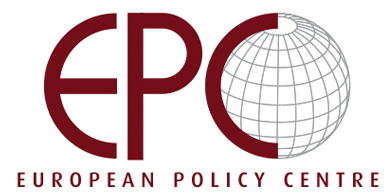By government office for science, UK, 2009
Scenario 1: Global Innovation.
Energy and mineral prices stayed high, despite subdued demand, owing to a dearth of new discoveries and low investment caused by uncertainty over long-term prices. The second half of the decade was different. The ‘climate crisis’ of 2015 provided a wake-up call to international collaboration, with a number of positive consequences.
At the start of the decade, though, slow recovery in developed economies held back developing countries, which were buffeted by high and volatile commodity prices. While this worked in favour of some commodity exporters, population growth, resource depletion and climate change slowed progress on poverty reduction, and levels of inequality remained high.
Oil and mineral-producing countries recycled some of their earnings into value-added manufacturing industries. Western firms benefited considerably by providing engineering and manufacturing consulting services and training to support these projects. Despite the fact that the trade system remained open, only halting progress was made at the global level and intercontinental trade was hit badly. Even though financing improved with the provision of international guarantees, volumes remained well below those of the early years of the century. High transport costs and weaker Western currencies slowed demand for goods from Asia.
Regional trade picked up to offset some of the shortfall. This was in part because high oil prices discouraged the shipping of goods over long distances, but another factor was the bigger role played by regional trading blocs, which also benefited from the increased development aid made available to support regional integration and trade facilitation.
Currency imbalances eased as the proportion of services versus goods traded increased. This was accompanied by diversification by Asian and major oil-producing countries into a wider range of currency assets alongside the US dollar.
Access to resources became a significant trade issue, and a number of countries responded by restricting exports. As a result, greater emphasis was placed on tackling this trend in international trade agreements, leading to modest progress in introducing multilateral rules.
Within a year, a coalition of countries and regions had agreed to allocate revenues raised by carbon taxes to a new international fund that would invest in low carbon technologies and make them available around the world. Thanks to investments from the fund, major breakthroughs have been achieved in solar and tidal technologies. Carbon capture and storage has increasingly been included in new coal-ired power stations. This technology rush has created a huge market, boosting businesses across the world.
A side-benefit of this movement has been a more active set of global institutions with growing popular support. Better global coordination has had a remarkable impact in developing countries, where investments from the technology fund have led to thriving new businesses, and where IT-enabled trade facilitation and improved access to developed markets have contributed to economic growth, which has in turn led to much lower levels of poverty and deprivation.
Scenario 2: Global citizen
The world experienced a very sharp but short-lived recession which ended in early 2010 thanks in part to the contribution of large emerging economies in helping to restore global demand.
Chastened by the crisis, countries have increased their collaboration, strengthening national and international regulatory regimes and monitoring systemic financial risk. This has restored confidence in international trade and capital lows – trade is forecast to continue to grow steadily. The reformed International Monetary Fund (IMF) has taken on a broader and stronger supervisory role.
Progress has been made on establishing the rule of law in international trade and improving its application in national jurisdictions. The World Trade Organization (WTO) has played an important role since the Doha Development Round was agreed in 2010, giving developing countries, particularly smaller ones, improved access to world markets, and the Jakarta Round is now under way. Intellectual property rights are better protected, and this has led to cross-border investments in a range of new technologies.
The IMF has become a major bond issuer; its bonds have proved popular with newly industrialising countries, which have increasingly preferred them to traditional sovereign bonds. One of the results of this has been a rebalancing of private savings, exchange rates, and budget deficits and surpluses across the globe.
The improved Intellectual Property Rights regime and a simplified global tax system have encouraged multinational companies to be more mobile. Manufacturing activity takes place closer to supplies of raw materials, and has provided an effective mechanism for raising standards of living. Efforts by civil society organisations around the world, and particularly in developing countries, have led to increased social protection.
There has been a gradual relinquishing of national sovereignty in favour of global institutions, and within these institutions the West’s influence has declined. Although this has led to campaigns by nationalist parties in many countries, the ‘global citizen’ appears to have taken such changes in his or her stride. This was initially put down to relief at coming out of the 2008–09 crisis relatively unscathed, but recently there have been signs that the growing influence of global institutions is viewed as a positive development in its own right.
Western countries and companies no longer call the shots in this world, in which the newly industrialised economies have – gradually and carefully – established their influence. Manufacturing has become ever more skills-intensive and, despite increasing specialisation, some traditional exporters have found it hard to compete. Smaller countries have reacted by seeking closer trade ties with regional groupings.
Leading global firms, in particular the new breed of Asian multinationals, have forged ahead with innovations and design improvements in high technology products. To compete in these fields, Western countries have sought to boost the number of science and technology graduates in order to increase the volume and quality of hi-tech skills among their workforce.
Western countries have maintained a lead in knowledge-based sectors such legal and financial services and marketing, while some have specialised in training overseas R&D workers and exporting educational services (although there are constant concerns about a ‘brain-drain’). In these cases, outward investment and a good awareness of local trading environments have proved crucial to success.
Scenario 3: fragile alliances
International trade balances improved, but global currency imbalances remained, and have threatened to destabilise world trade at various points during the decade.
Trade between human capital-rich and resource rich countries has flourished, with powerful multinational lobbies taking the lead. But countries without the human capital or natural resources to participate in such exchanges have been left out. Rapidly industrialising developing countries have been on a constant, often frantic search for resource partners in order to maintain the growth necessary for their stability and development, and have been accused of making deals with oppressive regimes.
This has led to a ‘spaghetti’ formation of bilateral deals, broken up only by the activity of cartels of resource-producing countries, which have banded together to protect their interests and pool their negotiating efforts over resources from oil to rare minerals. These ‘country cartels’ engage in collective bargaining with global clients, who seek (often successfully) to pick apart these fragile alliances.
Trading blocs with discriminatory rules constantly form and disband; those that have lasted longer have often had a political agenda. Governments are eager to support their key industries with a mixture of subsidies and political incentives. Although the earnings of resource exporters are spent on goods from industrialised countries, which therefore maintain a degree of prosperity, this trade generally takes place within the narrow framework of bilateral agreements and ad hoc trading blocs. The result has been huge inefficiencies and poor allocation of resources, resulting in a lack of innovation, low responsiveness to consumer demand and expensive and low-quality products.
Development aid has followed a similar pattern. Efforts to improve coordination have had little success, with aid being used more and more as a way of opening doors to support countries’ trade interests rather than to alleviate poverty. The citizen-consumer has in any case retrenched and lowered his or her expectations. The failures of the trade and climate change negotiations, and increasingly inward-looking behaviour, have seen a resurgence of nationalistic politics. Migration controls are tightened with few complaints. The looming threat of severe climate impacts has been met by vigorous adaptation measures – which have had the advantage of mobilising the domestic workforce and providing employment.
Scenario 4: deglobalisation
Some blame a lack of coordination and the failure adequately to reform the international financial system. The result has been a downward spiral of global confidence. A recession lasting the best part of the decade has led to commodity price stagnation and a prolonged slump in trade and investment.
Countries have adopted different strategies to ride out the recession, including economic nationalism, bilateral deals and closer regional groupings. Weaker economies have sought shelter under regional umbrellas, while the capacity and willingness of stronger economies to support weaker countries have vanished. Public confidence in governments’ ability to shift the world out of recession has hit rock bottom. A ‘blame the West’ narrative has gained traction in the large industrialising countries.
Conflict has larded up regularly throughout the decade: ‘water wars’, resource grabs and contested claims to Arctic deposits. But despite frequent provocations and occasional skirmishes, none of the major powers has been drawn into the conflicts so far.
Droughts and climate shocks have disrupted food production, leading to export restrictions and high and volatile food prices, not to mention famine in several countries. Net food importers have been particularly hard-hit, and the more powerful have purchased land abroad to grow supplies, though this policy has met with fierce local resistance.
Food and energy security are at the heart of regional as well as national policy. Support for interventionist agricultural policies has grown at national and regional levels.
The nationalist and ‘regionalist’ response to recession has brought back protectionism in many guises, and ‘deglobalisation’ is under way. Trade agreements have started to unravel, with some countries seeking to pull out of the WTO when they are sanctioned for breaking its rules. One impact of this has been the shortening of supply chains, both geographically (suppliers are more local) and in corporate terms, with vertical integration making a come-back. There are increasing restrictions on foreign investment, both from countries that want to limit a foreign presence in their economies, and from countries that have restricted their own companies from off-shoring and ‘exporting jobs’.
In countries able to secure the necessary raw materials, some of the impact of the new protectionism has been perceived as positive, reviving low-value production and renewing a sense of national identity; there has been growth in associations, charities and volunteering. Innovation and wages have, however, fallen. Consumers are less spoilt for choice and face higher prices.
The main losers have been exporting countries, particularly single-commodity exporters and manufacturers of industrial goods where the local (or regional) market is unable to absorb the products that were previously traded internationally.
Where international trade does still continue, it is dominated by state-controlled multinationals, and corruption and links to organised crime is a common feature.
Developing countries experience ever-lower earnings from exports and sharply reduced levels of investment and remittances (migration controls are widespread and rigorously enforced). They are strongly reliant on help from the international financial institutions, whose resources are over-stretched. Inequalities between and within countries have increased sharply. Developing countries have also been hurt by increasing volatility in international food and commodity markets, due to the increased use of domestic subsidies and export restrictions.
Aid for poverty reduction has dropped down the agenda of Western countries, and where aid is still provided it is generally in an attempt to reduce migration pressures or to further strategic and security interests. Some effort is made to intervene in conflict situations where these are perceived to be a direct threat to a country’s interests, but in many cases conflicts are left to fester, with only token provision of humanitarian aid.



